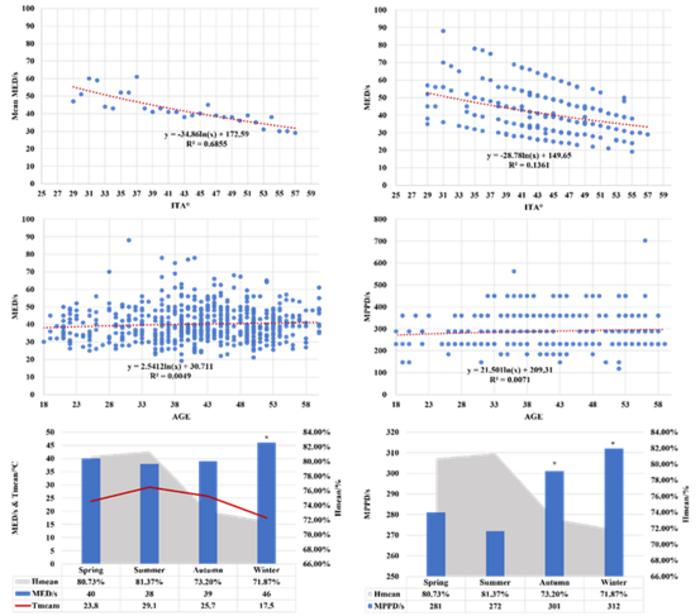Current sunscreen efficacy testing relies on minimal erythema dose (MED) and minimal persistent pigment dose (MPPD). However, these metrics vary due to multiple influencing factors.
In a new study published in the Journal of Dermatologic Science and Cosmetic Technology, a team of researchers from Centre Testing International Group Co., Ltd. and Better Invention Company Limited retrospectively analyzed how skin color, season, and age affect UV protection capability.
“Skin’s UV defense varies significantly with pigmentation, season, and environmental humidity,” explains lead researcher Yu Sun in a news release. “Lighter skin showed lower unprotected MED values—indicating higher UV sensitivity—while winter conditions correlated with greater UV tolerance, likely due to stratum corneum hydration changes in cold, dry climates.”
The key finding of the study include:
- Skin color (measured by ITA°) negatively correlated with unprotected MED but not MPPD.
- Age had minimal impact, but seasonal differences were pronounced: higher MED in winter, elevated MPPD in autumn/winter.
- These variations may stem from temperature- and humidity-driven skin barrier adaptations.
“Our study redefines sunscreen testing,” adds co-author Yingge Chen. “Tailoring tests to target demographics’ skin tones and seasonal usage scenarios—like winter sports products tested in winter—ensures real-world efficacy aligns with lab results.”
The team advocates for lab-specific MED/MPPD prediction models to enhance testing precision, accelerating the shift toward precision sunscreens, optimizing UV protection for diverse populations.
IMAGE CAPTION: Relationships between unprotected UV tolerance and skin color/age/season.
IMAGE CREDIT: YU SUN, et al.


